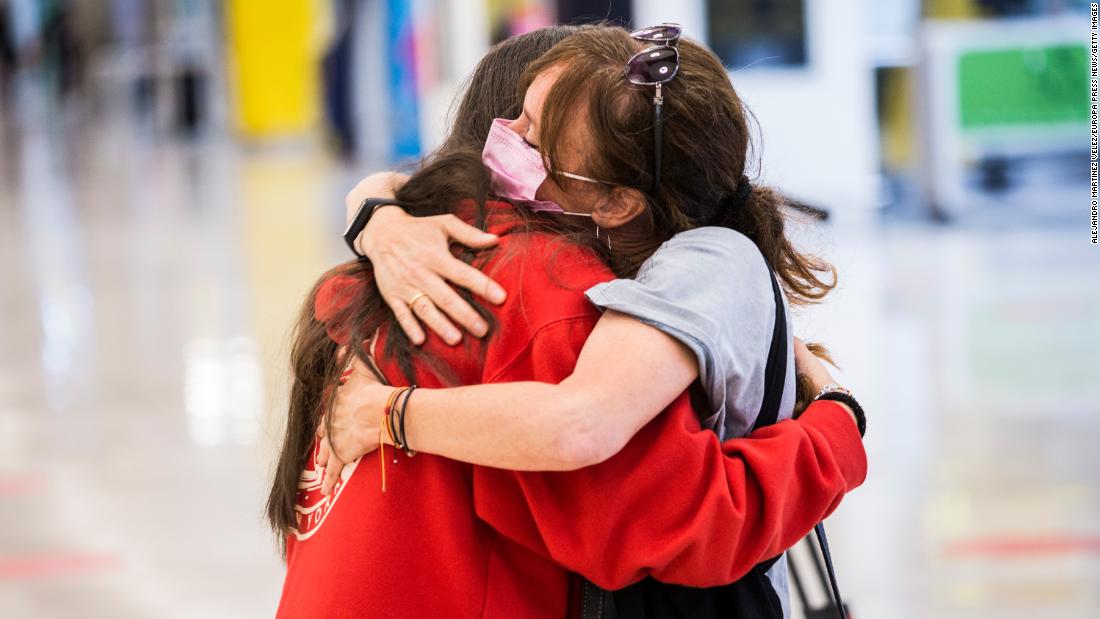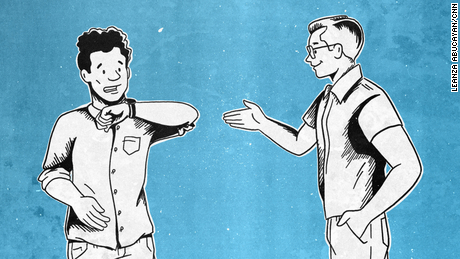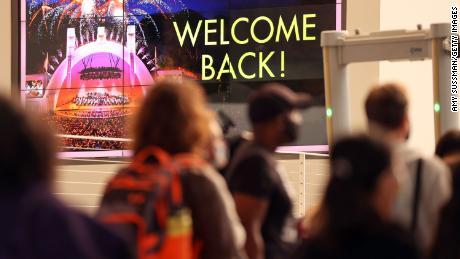Opinion: If being touched is weird for you, you’re not alone
As the light at the end of the tunnel gets closer, the possibility of pre-pandemic interactions — hugs, high fives, intimate dinners, big weddings — are tantalizingly close. But it also remains frustratingly difficult to figure out what’s right, what’s safe, and what’s respectful.
There is a clear question of public health at play: first and foremost, we have to decide whether it’s safe to engage in these types of contact with friends, coworkers, or people you are meeting for the first time (especially if you don’t know their vaccination status).
From the perspective of science, for fully vaccinated people spending time with other fully vaccinated people, it is absolutely safe to go back to the physical interactions we might have had before the pandemic — hugs, handshakes and more.
It gets a little murkier when you’re vaccinated, but you’re not sure about those around you. The higher the vaccination rates and the lower the rates of Covid-19 in your community, the smaller the chance of an interaction being risky. If only 1 of 100,000 people in your area have Covid-19, and you’re vaccinated, the chance of you catching an infection in any given social interaction is practically zero, regardless of whether the people around you have gotten their shots. The challenge here, of course, is three-fold. Most of us don’t know our community’s Covid-19 rates. Most communities’ current infection rates are still above this negligible level. And it feels strange to ask someone whether they’ve been vaccinated.
And this is the other side of the science. Just because the data says we’re safe doesn’t mean that everyone will be comfortable moving back towards 2019 practices all at once. Many of us haven’t had close interactions with people outside of our household in over a year — we’ve been keeping 6′ of distance, keeping masks on and bumping elbows at most. This feels justifiably weird to many.
Which leaves us with the very real social question of how to navigate these interactions.
Here’s the thing: each of us is in a different place, physically and mentally. While some of us can’t wait to be socializing again, others feel differently. Some Americans have been very content to be at home by themselves — some may have lost a loved one, others may still be worried that a loved one has a compromised immune system or has otherwise been unable to be vaccinated. For people in these categories, it may not feel normal or safe to interact with other people yet.
So how should we think about these moments in this in-between period, where we aren’t quite out of the pandemic, but nor are we completely in it?
First, become comfortable asking about others’ comfort levels directly, before going in for that handshake or hug. And feel free to state your own preference. There is no right or wrong here.
Second, don’t take it personally if someone doesn’t want to give you a hug or handshake, or doesn’t want to take off their mask; you don’t know their circumstances, and it likely is not about you!
Third, keep an eye on community transmission and vaccination rates in your area, and be prepared to scale back physical interactions if transmission rates rise.
Many workplaces are allowing for a gradual easing-back into in-person work routines. It’s okay to ease back to physical touch, too. Letting re-emergence happen on the terms and comfort level of each person is okay.
It’s been a long 16 months. This moment is a good time to show each other a little grace.
![]()






